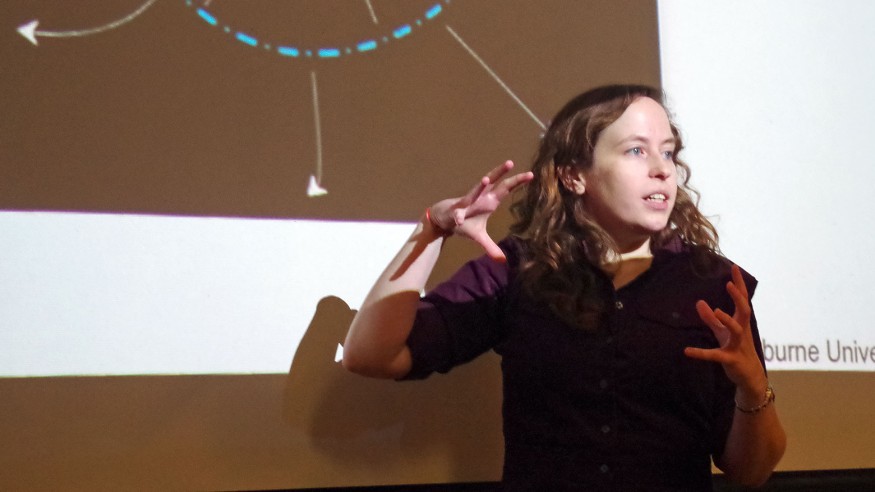
A Rising Star
Rachael Roettenbacher ’08 Publishes Astronomy Research in Nature
Since graduating cum laude from Ohio Wesleyan University with a bachelor’s degree in astrophysics and mathematics, Rachael Roettenbacher ’08 has earned two master’s degrees and, this spring, a Ph.D. in astronomy and astrophysics.
Next up, the newly anointed Dr. Roettenbacher plans to conduct postdoctoral research at Stockholm University in Sweden.
In May, she also was the first author on a letter published in the internationally renowned scientific journal Nature. (Nature describes letters as “short reports of original research focused on an outstanding finding whose importance means that it will be of interest to scientists in other fields.”)
Titled “No Sun-like dynamo on the active star ζ Andromedae from starspot asymmetry,” Roettenbacher worked to create and analyze images of starspots, dark regions indicating strong magnetic fields similar to sunspots, on a rotating star located 181 light-years from Earth.
For the National Science Foundation-funded project, she and collaborating researchers used interferometry, a technique that combines light from several telescopes to generate “close-up” images of objects too far away for traditional telescopes to see in detail.
Now a postdoctoral researcher at the University of Michigan – where she earned both her second master’s degree and Ph.D. – Roettenbacher collaborated on the project with researchers from the University of Turku, University of Copenhagen, Georgia State University, Hungarian Academy of Sciences, University of Exeter, Harvard-Smithsonian Center for Astrophysics, Pennsylvania State University, and, of course, Ohio Wesleyan.
Roettenbacher said the observed state of ζ Andromedae can be compared to a younger version of the sun, which rotated more rapidly and had a much stronger magnetic field (producing bigger sunspots).
“It’s important to understand the sun’s history because that dictates the Earth’s history – its formation and the development of life,” Roettenbacher said in an interview published by the University of Michigan. “The better we can constrain the conditions of the solar environment when life formed, the better we can understand the requirements necessary for the formation of life. These are the highest quality images of a star we have other than the sun.”
As for next steps, Roettenbacher said she plans to leave for Sweden at the end of July, where she will continue her efforts in imaging the surfaces of spotted stars while working with a research group that detects planets around other stars.
“In some studies, the signatures of planets and starspots can be similar, which leads to false detections of planets,” Roettenbacher said. “With my next project, I aim to improve our knowledge of starspots such that we better understand stellar magnetism so as to more accurately determine if new planets have been detected. This is particularly important for efforts to detect potentially habitable planets around spotted stars.”
Roettenbacher’s OWU mentor and continuing research collaborator, Robert O. Harmon, professor of astronomy and physics, said he is impressed by her growing list of accomplishments.
“It was a pleasure working with Rachael while she was at OWU on a summer research project at Perkins Observatory and later on her senior research project, which led to a peer-reviewed publication in The Astronomical Journal. I feel privileged to continue collaborating with this outstanding young researcher. She has a very bright future ahead of her!”
In addition to maintaining research connections, Roettenbacher also has returned to Ohio Wesleyan to speak to students about her work.
During a 2014 visit, she said: “My time at OWU was fundamental to getting me to where I am now. The opportunities available here, with the research opportunities and the support from the faculty, is just a huge asset to getting me to where I am.”
While an Ohio Wesleyan student, Roettenbacher was selected as one of three college students nationwide to earn the Society of Physics Students’ “Outstanding Student Award for Undergraduate Research” and to represent the United States at the 2008 International Conference for Physics Students held in Cracow, Poland.
Congratulations to this OWU star!
